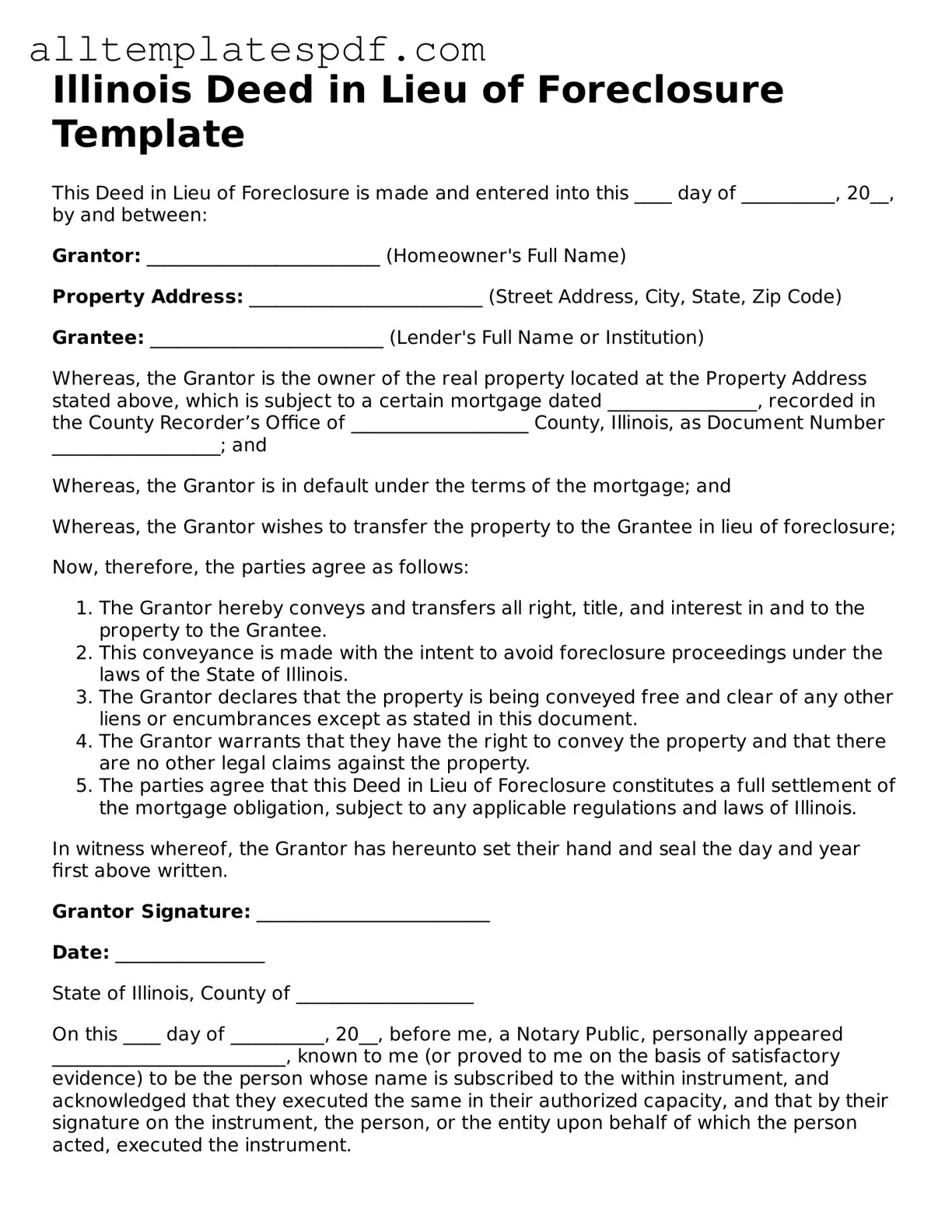Filling out the Illinois Deed in Lieu of Foreclosure form can be a daunting task, and many individuals make common mistakes that can complicate the process. One frequent error is failing to provide accurate property information. It’s essential to ensure that the legal description of the property is correct. This includes the address and any relevant parcel numbers. Inaccuracies here can lead to delays or even a rejection of the deed.
Another mistake often encountered is not obtaining all necessary signatures. If there are multiple parties involved in the ownership of the property, all owners must sign the deed. Omitting a signature can render the document invalid, which can create further complications in the foreclosure process.
Many people also overlook the importance of notarization. The Deed in Lieu of Foreclosure must be notarized to be legally binding. Skipping this step can lead to issues with the acceptance of the deed by the lender. It’s advisable to schedule a meeting with a notary to ensure that this requirement is met.
Additionally, individuals sometimes fail to understand the implications of the deed. They may not fully grasp that signing this document can affect their credit score and future borrowing capacity. It's crucial to seek guidance on how this decision can impact financial standing before proceeding.
One common oversight is not reviewing the deed for clarity and completeness. Ambiguities or missing information can cause confusion later on. Before submitting the form, take the time to read through it carefully, ensuring that all details are clear and complete.
Lastly, individuals often neglect to keep copies of the submitted deed. After filing, it’s important to retain a copy for personal records. This documentation can be vital for future reference, especially if questions arise regarding the deed or its acceptance by the lender.
